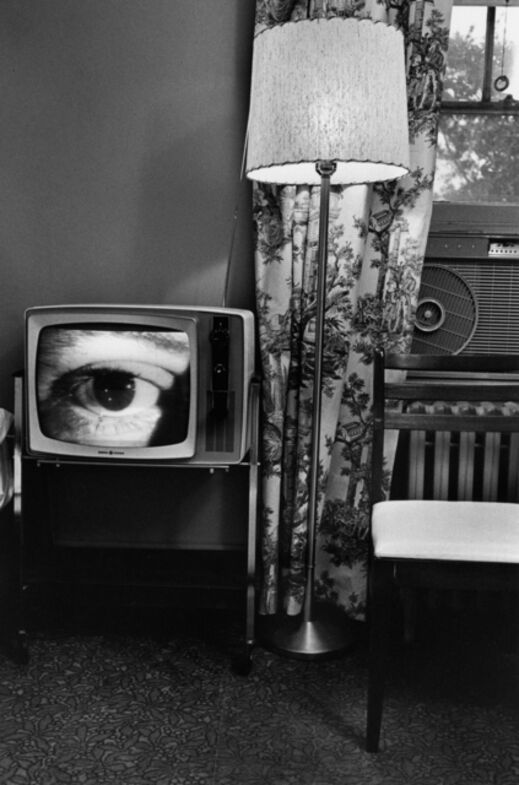Lee Friedlandler
Lee Friedlander's works has a variety of photographs that mainly contained landscapes, signs, and people living in a busy city. The way he chose to capture these images was rather interesting because of the way he framed them. Friedlander chose to bring in his own shadow in to most of his images along the people where walking in his photo, or the signs, or the branches of the trees.
I think Friedlander wanted to incorporate himself in the images as a symbol that he was there, he was living in that moment with the people as well. Yes, he was the person taking that photo, but the image is only from his perspective and he might have wanted to see himself in that perspective as well, which is what he did with his shadows. Apart from including his shadow in the image, the people he chose and why he chose them was another thing. Maybe it was just in the moment where he wanted to take a picture without choosing a specific stranger, or maybe he was intrigued by them to take a photo.
Washington, D.C., 1962
Lee Friedlander
There are several themes that Friedlander took on, but I think one of my favorite series had to be the ones with the little screens. Washington, D.C., 1962. The placement of the television made it more interesting instead of having it in the middle. I feel that this choice of placement is what made the image stand out more to me because it seems the eye on the screen is the left eye. By placing it on the left side, it leaves the person viewing it to see beyond the furniture and to somewhat see a face, with the end of the lamp looking like the tip of the nose and the a/c on the right side like the other eye.
According to Fraenkel Gallery, Friedlander was intrigued by the small televisions, the way they lit up the single rooms. He decided to use the scenes on the screens and turn them into images like the one above, by placing them a certain way and not directly having it in the middle in some instances. Capturing almost everything around the television to see the textures of the fabric on the beds, the curtains, or the doors.
Works Cited:
- “Lee Friedlander: Photographer's Biography & Art Works: Huxley-Parlour Gallery.” Huxley, huxleyparlour.com/artists/lee-friedlander/.
- "Lee Friedlander: The Little Screens: Fraenkel Gallery." Fraenkel, fraenkelgallery.com/exhibitions/the-little-screens-2.
- “Lee Friedlander: Washington, DC (1962): Available for Sale.” Artsy, www.artsy.net/artwork/lee-friedlander-washington-dc.

Comments
Post a Comment